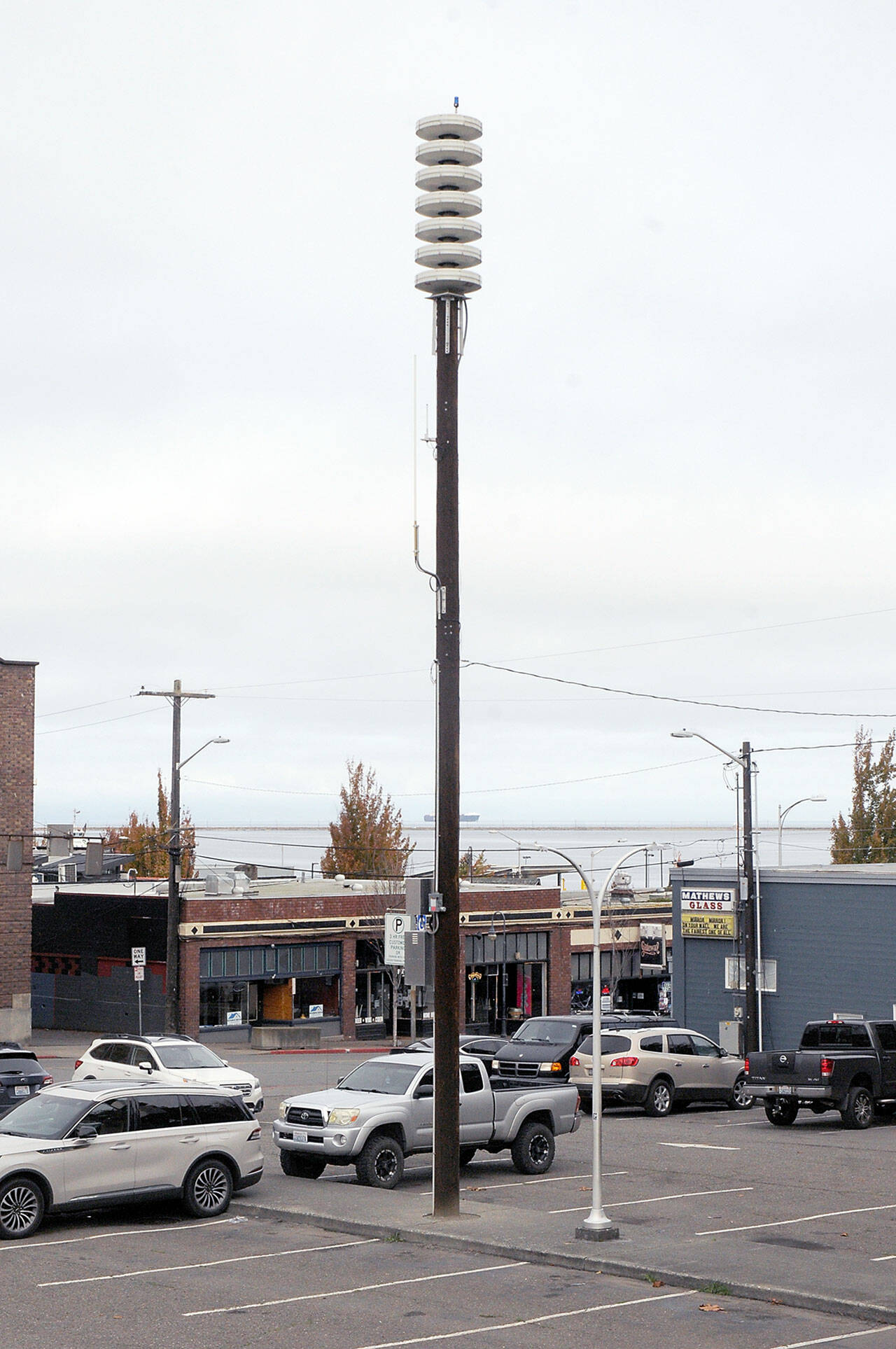If you didn’t hear the emergency sirens during the Great Washington ShakeOut on Thursday, then it’s likely you weren’t expected to do so.
The sirens are meant to be heard by those who are outside and within 500 feet of all directions of the sirens, according to the state Emergency Management Division.
“It’s for people outside in the flood zone,” said Willie Bence, director of the Jefferson County Department of Emergency Management. “We have five to 10 people every year who say they were inside and didn’t hear it.
“People in uptown Port Townsend are well outside the flood zone,” he added.
The statewide earthquake drill, part of a national drill, was conducted without any problems on the North Olympic Peninsula, emergency management directors said.
“It seems to have gone just fine. I got (the notification) on all my phones and my computer lit up,” said Clallam County Undersheriff Ron Cameron, who also is the county’s emergency management director.
Bence agreed.
“It went well. Forty people showed up for the neighborhood preparedness drill in the afternoon,” he said.
His department gets calls every year from people confused about the purpose of the test sirens, so personnel are keeping up with education about their purpose while continuing the monthly tests, which helps a lot, Bence said.
More than 15,000 in Clallam County and 2,400 in Jefferson County signed up for information, according to the Great Washington Shakeout website at https://www.shakeout.org/washington.
Experts have said it is not if, but when, a Cascadia Subduction Zone earthquake will hit the region.
The 800-mile Cascadia subduction zone off the Pacific Coast, which stretches from southern British Columbia to Northern California, spawns massive earthquakes of 9.0 magnitude or higher an average of once every 200 to 500 years, with the last in about 1700. Scientists have predicted a 37 percent chance of such a quake happening again within the next 50 years.
Such a quake would trigger tsunamis and collapse bridges and roads, creating isolated communities.
Due to its geography, the Lower Elwha Klallam Tribe’s reservation west of Port Angeles is particularly vulnerable to a tsunami. Elwha Emergency Management Director Glen Roggenbuck said Thursday’s drill on the reservation went well.
“We had about 70 people participate in the evacuation part,” he said. “I thought it was a pretty good turnout. People had difficulty hearing the message depending upon their distance from the siren, but they did hear the siren.
“From our perspective, we consider it a real success,” he added.
In addition to the 90-second high-pitched wailing siren, a message was broadcast in both English and Spanish explaining it was only a test. The wailing siren was different from the Westminster chimes used to test the sirens each month.
After the siren finished, 70 tribal department directors and police officers participated in a two-hour tabletop emergency exercise, Roggenbuck said.
Thursday’s Great Washington ShakeOut occurred at 10:19 a.m., when more than 100 tsunami sirens were activated and people who had signed up received notifications on their phones. During the self-led drill, participants practiced how to “Drop, Cover and Hold On.”
Other special events included Jefferson County’s Emergency Operations Center orientation at the Chimacum Fire Station and a demonstration of a Neighborhood Emergency Hub in Port Hadlock as well as a demonstration on anchoring propane tanks in Joyce.
The state has 122 emergency sirens in coastal areas throughout the state. Cameron said, according to an email from the state, every siren in Clallam County worked except for the one on Marine Drive near the Port Angeles Boat Haven that was destroyed in April.
“We are working on the Boat Haven one,” he said. “We’re talking to state about that.”
In April, a driver struck the support pole for the siren near the Boat Haven on Marine Drive and toppled it to the ground. It has yet to be replaced. In addition to the Boat Haven, Port Angeles has sirens by the Morse Creek estuary and at First and Lincoln streets.
Karina Shagren, Washington Military Department Communications Director, wrote in a Friday afternoon email that the state still is working closely with Clallam County to identify funding to replace the siren, although the state was not leading the effort.
In Clallam County, sirens are located at La Push, Neah Bay and other locations on the Makah Reservation, Hoko River, Clallam Bay and Sekiu, the Lower Elwha Klallam reservation, Port Angeles, the Dungeness and Jamestown communities north of Sequim, Blyn and Diamond Point.
In Jefferson County, sirens are at three sites in Port Townsend — the Port Townsend marina, Point Hudson and Fort Worden — and on the Hoh reservation on the West End.
________
Reporter Brian Gawley can be reached at 360-452-2345, ext. 55650, or at brian.gawley@peninsuladailynews.com.
Executive Editor Leah Leach contributed to this story.

